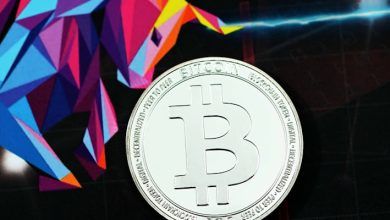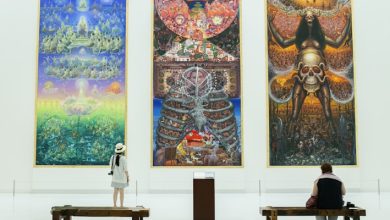Exploring the Future of NFTs: Expert Predictions

- Understanding the Rise of NFTs in the Digital Art World
- Key Factors Driving the Popularity of NFTs Among Collectors
- Challenges and Opportunities for NFTs in the Mainstream Market
- Expert Insights on the Potential Impact of NFTs on Traditional Art Markets
- Exploring the Role of Blockchain Technology in the Future of NFTs
- Predictions for the Evolution of NFTs in the Coming Years
Understanding the Rise of NFTs in the Digital Art World
The rise of NFTs in the digital art world has been nothing short of revolutionary. Non-fungible tokens have completely transformed the way artists create, sell, and collect digital art. NFTs provide a unique way for artists to authenticate and monetize their work, while also offering collectors a new way to invest in and own digital art.
One of the key reasons behind the popularity of NFTs in the digital art world is their ability to provide proof of ownership and authenticity through blockchain technology. This has helped to address the issue of digital art being easily replicated and shared without the artist’s consent. By creating a digital certificate of ownership that is stored on the blockchain, NFTs ensure that each piece of digital art is unique and cannot be duplicated.
Another factor driving the rise of NFTs in the digital art world is the growing interest in digital collectibles. Collectors are increasingly looking for unique and rare digital assets to add to their collections, and NFTs provide a perfect solution. With NFTs, collectors can own a one-of-a-kind piece of digital art that is verifiably scarce and cannot be replicated.
Overall, the rise of NFTs in the digital art world represents a significant shift in how art is created, bought, and sold in the digital age. As more artists and collectors embrace this new technology, the future of NFTs in the digital art world looks bright and full of potential.
Key Factors Driving the Popularity of NFTs Among Collectors
There are several key factors driving the popularity of NFTs among collectors. One of the main reasons is the uniqueness of each NFT, which is authenticated through blockchain technology. This scarcity and authenticity make NFTs highly desirable for collectors looking to own exclusive digital assets.
Another factor is the potential for NFTs to appreciate in value over time. Just like traditional art or collectibles, NFTs can increase in worth based on factors such as the artist’s reputation, the rarity of the piece, and market demand. This investment potential attracts collectors who see NFTs as a valuable addition to their portfolios.
Additionally, the ease of buying, selling, and trading NFTs on online marketplaces has contributed to their popularity. Collectors can easily browse through a wide variety of NFTs, purchase them with cryptocurrency, and store them securely in digital wallets. This accessibility has opened up the world of digital collecting to a broader audience.
Challenges and Opportunities for NFTs in the Mainstream Market
As NFTs continue to gain popularity, they face both challenges and opportunities in the mainstream market. One of the main challenges is the lack of understanding among the general public about what NFTs are and how they work. This lack of awareness can hinder adoption and acceptance of NFTs as a legitimate form of digital asset.
On the other hand, there are numerous opportunities for NFTs to thrive in the mainstream market. One of the biggest opportunities is the potential for NFTs to revolutionize the way we buy, sell, and trade digital assets. NFTs can provide a secure and transparent way to verify ownership of digital content, which can be especially valuable in industries such as art, music, and gaming.
Another opportunity for NFTs in the mainstream market is the ability to create new revenue streams for content creators. By tokenizing their work as NFTs, creators can sell digital assets directly to their fans, cutting out middlemen and increasing their profits. This direct-to-consumer model has the potential to disrupt traditional distribution channels and empower creators to take control of their own content.
Expert Insights on the Potential Impact of NFTs on Traditional Art Markets
Experts have been closely monitoring the potential impact of Non-Fungible Tokens (NFTs) on traditional art markets. There is a growing consensus that NFTs have the ability to revolutionize the way art is bought and sold, offering new opportunities for artists and collectors alike.
One key aspect that experts are focusing on is the democratization of the art world through NFTs. By leveraging blockchain technology, artists can directly connect with their audience, bypassing traditional gatekeepers such as galleries and auction houses. This direct relationship can lead to greater transparency and fairness in the art market.
Moreover, NFTs have the potential to increase the liquidity of art assets. Unlike physical artworks that are often illiquid, NFTs can be easily bought, sold, and traded on digital marketplaces. This increased liquidity could attract a new wave of investors to the art market, driving up demand and potentially increasing the value of art assets.
However, some experts caution that the rise of NFTs could also pose challenges to the traditional art market. The digital nature of NFTs raises questions about the authenticity and provenance of artworks, which are crucial factors in determining their value. Additionally, the environmental impact of blockchain technology used in NFTs is a growing concern among experts.
Exploring the Role of Blockchain Technology in the Future of NFTs
Blockchain technology is poised to play a crucial role in the future development of NFTs. By leveraging the decentralized and secure nature of blockchain, NFTs can ensure authenticity and provenance of digital assets. This technology allows for the creation of unique tokens that cannot be replicated or tampered with, providing a level of trust and transparency that is essential in the digital art world.
One of the key advantages of using blockchain for NFTs is the ability to create smart contracts. These self-executing contracts automatically enforce the terms of an agreement when certain conditions are met. This feature can streamline transactions and eliminate the need for intermediaries, reducing costs and increasing efficiency in the NFT market.
Furthermore, blockchain technology enables the creation of decentralized marketplaces for NFTs. These platforms allow artists and collectors to interact directly, without the need for a central authority. This peer-to-peer model empowers creators and provides them with greater control over their work, while also expanding the reach of NFTs to a global audience.
Predictions for the Evolution of NFTs in the Coming Years
Experts predict that the evolution of NFTs in the coming years will be marked by increased mainstream adoption and integration into various industries. As more artists, musicians, and creators embrace NFTs as a way to monetize their work and engage with fans, we can expect to see a surge in the number of unique and innovative NFT projects.
Additionally, advancements in blockchain technology will likely lead to improvements in the scalability and sustainability of NFTs, making them more accessible to a wider audience. This could open up new opportunities for digital collectibles, virtual real estate, and even tokenized real-world assets.
Furthermore, the rise of decentralized finance (DeFi) and the growing interest in Web3 applications are expected to drive further growth in the NFT space. Smart contracts and decentralized marketplaces will enable more efficient and secure trading of NFTs, while interoperability between different blockchain networks will create a more connected and vibrant ecosystem.




